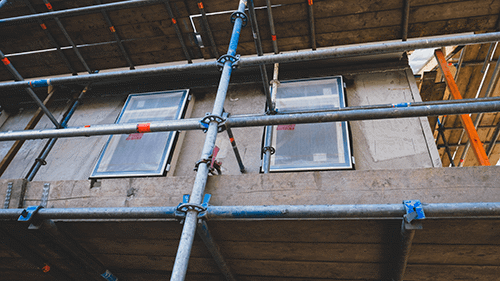
Property developers and investors need to be able to act fast when new opportunities present themselves. But, sometimes finding the right finance solution can be a bit of a barrier to their success.
That’s where a short-term funding solution, like bridging finance, could help. In this blog, we’ll highlight situations when you might need this option and break down the basics of this solution.
What is bridging finance?
Bridging finance is a borrowing option that is taken out on a short-term basis, usually over 1 to 3 years. It is used until a longer term solution is put into place, such as selling or remortgaging a property.
When might you need bridging finance?
A property investor or developer can turn to this option when they need quick access to funds. Some examples of when these short-term loans may be needed are:
- Property auctions: One common reason for taking out short-term financing is to purchase investment properties at auction. The loan is used to buy the property and fund any refurbishments it may need to get the house into a habitable condition ready to be let out or sold. At this point, if the refurbished property is to be let out, an alternative longer-term finance solution will be arranged.
- Property development: Some property developers may take out multiple finance streams when completing a certain project. After a while, these can become expensive and challenging to manage. In this instance, the developer may be interested in consolidating their loans into a single balance through bridging finance. Once the project has been sold, or the investor has remortgaged, the proceeds will be used to pay off the loan.
- Planning permission: There may be times when you’ve found a house or a plot of land that you would like to buy, however, it doesn’t have planning permission agreed and it is run down. In this case, you may be struggling to get finance approved for the purchase. In these situations, many people look to bridging finance to cover the purchase costs. Once purchased, they apply for planning permission, and when approved, they either sell it for a profit or develop it themselves.
Why do people use them?
These solutions give people the flexibility they need to quickly seize investment opportunities, so they are becoming more popular with property developers and investors.
The versatile and fast nature of this option makes it ideal for situations where people need funds quickly to develop property or complete a house purchase. Therefore, these are common purposes of this funding solution.
In some cases, they can even assist business owners who need immediate cash flow to help with issues or situations that arise in their company. For example, you may need short-term money in order to cover operational expenses or purchasing of stock.
Overall, there are a range of different reasons why people use this solution. But, one particular area is property investments and developments.
How are they repaid?
Unlike other finance solutions, these options are repaid in full when your longer-term solution comes into place. For example, you may use the proceeds you get from a property sale to pay off the loan.
The type of loan you get can also influence how you repay. There are two main types known as open or closed bridging loans.
Open bridging finance is where you won’t have a set date when you need to repay. Instead, lenders are a bit more flexible with your repayments, but usually they would like it to be cleared within 12 months.
On the other hand, closed bridging loans are where you do have a set repayment date. With this option, lenders are a bit stricter and will expect the loan to be cleared on the date given.
How long do I have to repay?
Bridging finance is not a long-term borrowing solution. Instead, they are taken out over a shorter period of time, which means you don’t have a long window to repay.
Generally speaking, most lenders will offer you a term ranging from one to three years. However, this can be dependent on the type of project you are undertaking.
Due to this, it’s important you think carefully about your options before you commit. You want to make sure that you have a solid exit strategy in place at the end of the term, otherwise you are likely to run into some problems with your lender.
What interest rate could I expect to get?
Interest rates can vary on a case by case basis, so it’s hard to determine what you might receive.
Some of the factors that can cause variations include:
- The provider you go with and their qualifying criteria;
- Type of property being used as security and its value;
- Whether you have a good or bad credit history;
- Loan size you’re looking for;
- Predicted value of the property once complete.
Usually, interest rates are higher than other finance options, due to the increased risk for lenders.
Summary
To sum up, bridging finance can be a great option for property developers and investors who need access to funds quickly. However, before committing to this solution, it’s always important to make sure you have a clear exit strategy in place.
Any property used as security, which may include your home, may be repossessed if you do not keep up repayments on your mortgage.




